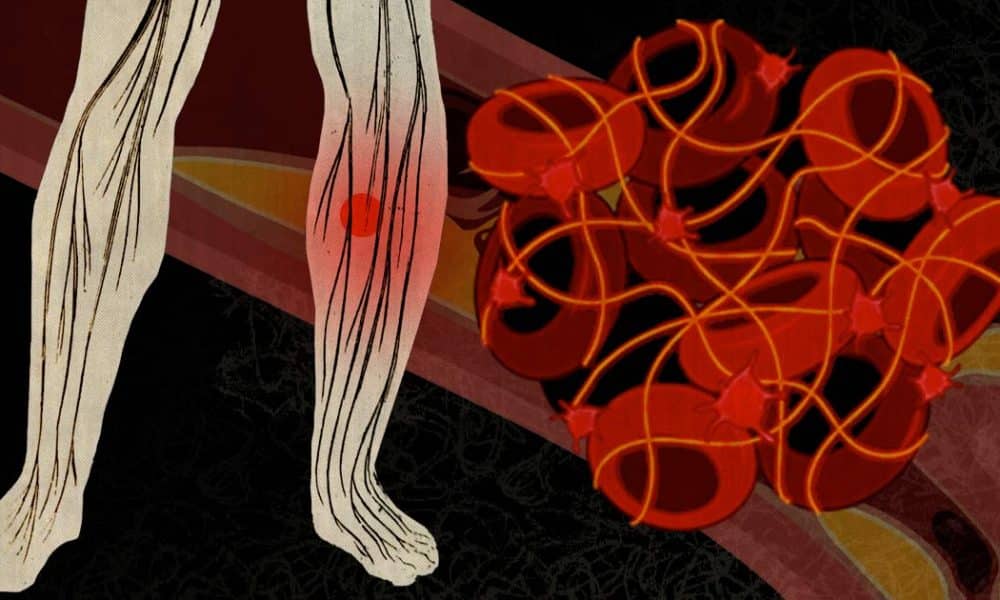
A cancer diagnosis: it’s something most of us dread, but which many people will have to deal with at some point. According to the UK’s National Health Service (NHS) one in two people will develop some form of cancer in their lifetime. And while not every case of cancer is lethal, it is still a major killer of people worldwide.
According to the World Health Organisation (WHO), cancer accounts for nearly one in six deaths worldwide. In Nigeria alone, cancer kills approximately 72 000 people a year. Anyone diagnosed with cancer should also prepare themselves to deal with secondary issues, including an increased risk of blood clots.
Cancer, patient, and treatment risks
Patients with cancer are at increased risk of blood clots in both the veins (VTE) and arteries (ATE). In fact, emerging data shows that cancer patients are at four times higher risk than the general population of developing serious blood clots. It's a startling fact; but important to know if you or a loved one is undergoing treatment for cancer.
As Dr Helen Okoye – medical expert and spokesperson for the World Thrombosis Day (WTD) campaign – notes, the relationship between cancer and thrombosis is complex, with a variety of factors determining how much risk someone faces.
“There are different factors that can increase the risk of a patient developing an embolism,” she says. “Some are cancer-related – there, we’re talking about the type and site of cancer, the state, the grade, and the time interval – some are patient-related, and some are treatment-related.”
“There are some cancers that are known to have a high risk of developing VTE,” she adds. “For instance, with haematological malignancies like lymphomas and multiple myelomas, the risk of developing VTEs is high. The risk is also high for lung cancers, pancreatic cancers, stomach cancers, bowel cancers, and even brain cancers.”
By contrast, prostate and breast cancers come with lower VTE risks. While the reasons for this increased risk with some cancers are unknown at this stage, patients should still be aware of it and ensure that they know what to look out for.
“Another cancer-related risk has to do with what stage the patient is at,” Dr Okoye says. “At the early stage, the risk is not as high as when the patient is at an advanced stage. And when there is disease metastasis, where the disease has spread to other parts of the body, the risk is higher.”
Timing can also play a role. According to Dr Okoye, the risk of developing a VTE is highest in the immediate three months following a diagnosis. Among the patient-related factors, she points out that age, race, and a prior history of VTE can all play a role in determining risk.
“When someone has high platelet counts, their risk of developing clots in cancer is also higher,” she says. “The same is true for anyone with comorbidities such as renal failure and varicose veins.”
The treatment option a cancer patient chooses to go with in consultation with their medical team can also play a role in blood clot risks. For example, Dr Okoye says, “We know that surgery is a major risk factor for developing thrombosis.”
Chemotherapy, a type of cancer treatment that uses one or several drugs in combination, and surgery can additionally damage the walls of your blood vessels, affecting the way they function and making clots more likely. Hormone therapy for breast cancer can also play a role, as can the drugs used to treat secondary conditions, such as anaemia and neutropenia.
“Of course, there are times when you need to hospitalise a cancer patient, but that also heightens the risk,” she adds.
Know the signs
It’s critical, therefore, that anyone facing a cancer diagnosis ensures that they’re properly informed when it comes to blood clots. They should also make sure that their families and support networks are equally well-informed.
Warning signs of deep vein thrombosis (DVT) in the leg, for example, can include pain, tenderness, warmth, and redness. For a pulmonary embolism (PE), which occurs when a blood clot gets caught in an artery in the lung, the warning signs include unexplained shortness of breath, rapid breathing, chest pain, a rapid heart rate, and light-headedness or passing out.
The increased risk of blood clots also makes it even more important that, wherever possible, patients minimise the likelihood of their development by keeping active. Even if you’re on bed rest, you might be allowed to occasionally walk around the house or do some leg exercises in bed, at least. Whatever the case, it’s critical that you keep your legs moving and your circulation flowing.
This article was originally published on Naija News
from Naija News https://ift.tt/VapQAP2
via IFTTT
